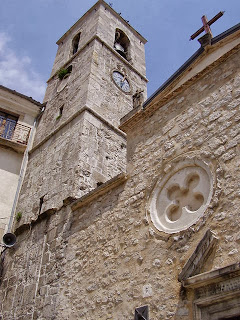 |
| Pizzone, photo courtesy of Alfonso Notardonato |
Her birth was registered in the Stato Civile office in Pizzone, which recorded that she was presented by her father, Pasquale, and that her paternal grandmother, Francesca Di Vito, was the witness. The Sindaco, the mayor at the time, then signed the document. More than ten years before, from 1854 to 1856, Cristina’s father had been Sindaco. During his first year as mayor, his son Antonio was born. On the Atto di Nascita, the civil Act of Birth, Pasquale is listed as un proprietario, a land owner. However, by the time Cristina was born, some misfortune had reduced his circumstances. He was now un contadino, a farmer who rented land, a peasant. The unification of Italy, which began in 1861, resulted in difficult economic times in southern Italy. This might have been the cause of Pasquale’s reversal. Many southern Italians lost their land during this time.
And there were other troubles. The child Antonio would not survive. Pasquale and his wife Felicita Di Iorio (Italian women did not take the surname of their husbands) lost their first three children. Infant mortality was high in this part of Italy during the second half of the nineteenth century. It was common for women of this time to bear children every other year or so for twenty years. To lose three children was not unusual. The unfortunate infant would often be laid out in his or her christening gown. The tiny coffin would be carried on a draped board or tabletop during the procession to the cemetery, the pallbearers at each corner. Sometimes, the coffin was carried just by the mother, balanced on her head.
 |
| The campanile of San Nicola |

No comments:
Post a Comment